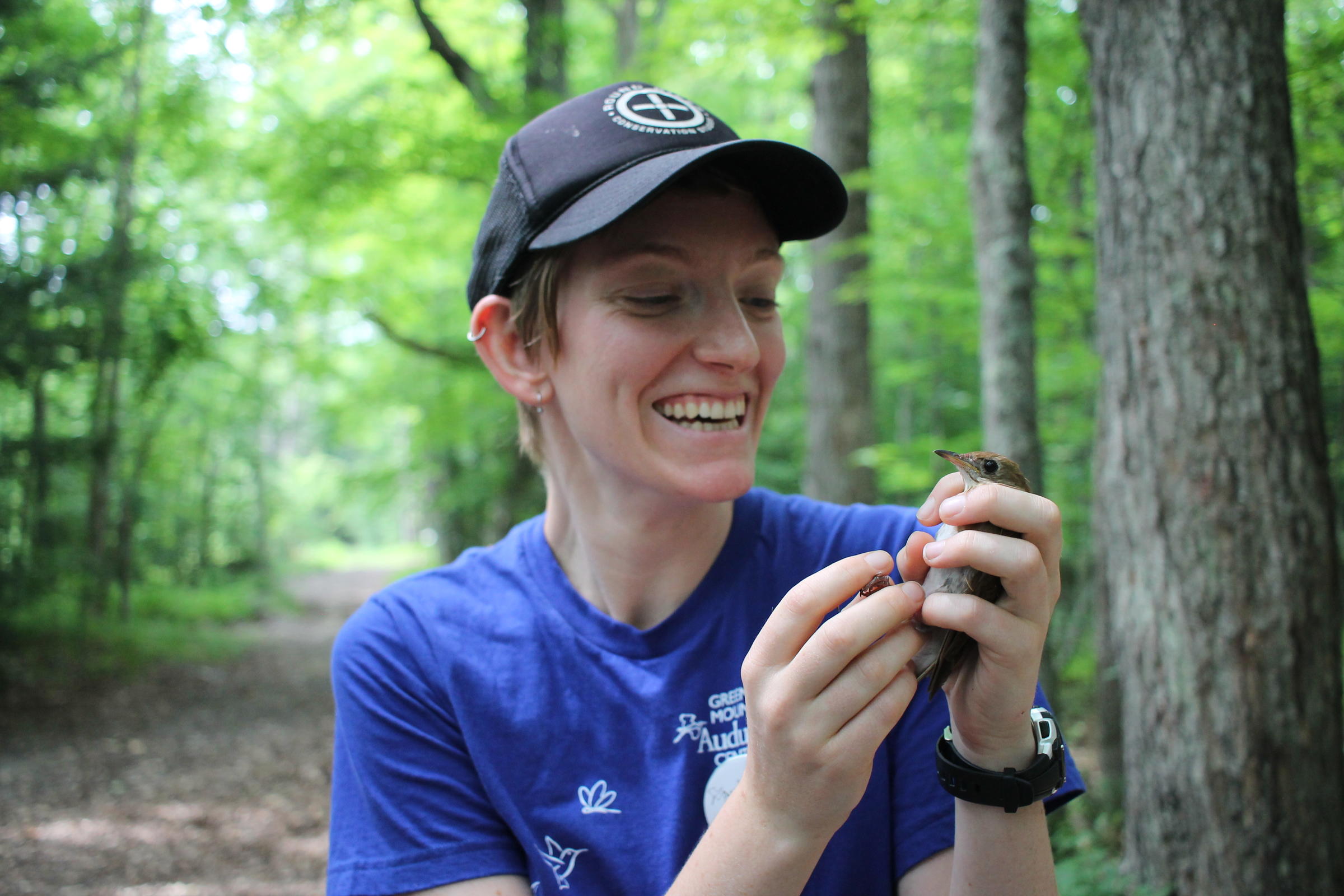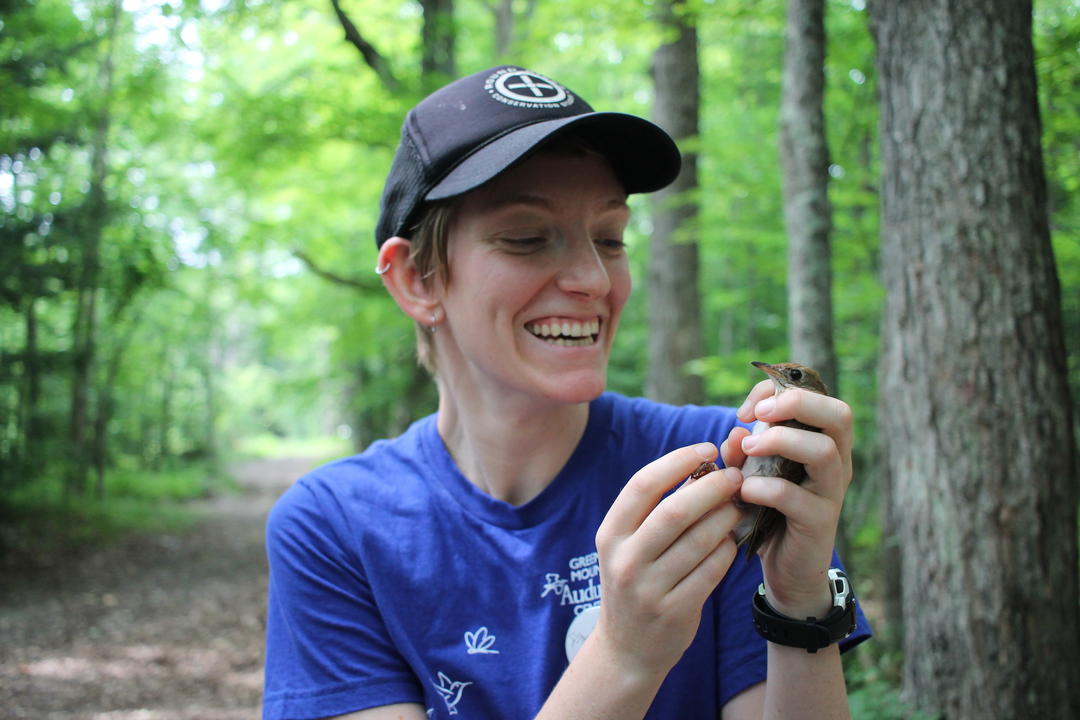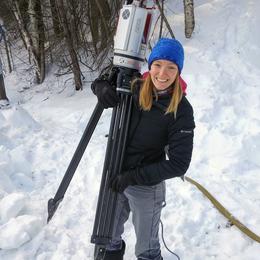Hannah Weiss is Audubon Vermont’s UVM Conservation Education Fellow for 2019, a position which involves broad participation in the organization’s many conservation and nature education initiatives. These articles are part of a series of “field notes” pieces, written to give the community a fellow’s-eye view of the exciting and important work being done by Audubon Vermont every day.
HUNTINGTON, Vermont (July 8, 2019) -
I arrive at the Audubon Vermont’s Green Mountain Audubon Center at 6:30am. Today I am to learn bird-banding, and since I don’t yet see Mark, I sit down at the bird banding station to wait. It’s a cool, bright, and clear early July morning and the station is prepped with a scale, small ruler, reams of silver bands, a large bird-banding guide book . After a couple minutes, Mark emerges from the woods holding several wriggling cotton bags. Inside these bags are the day’s first catches.
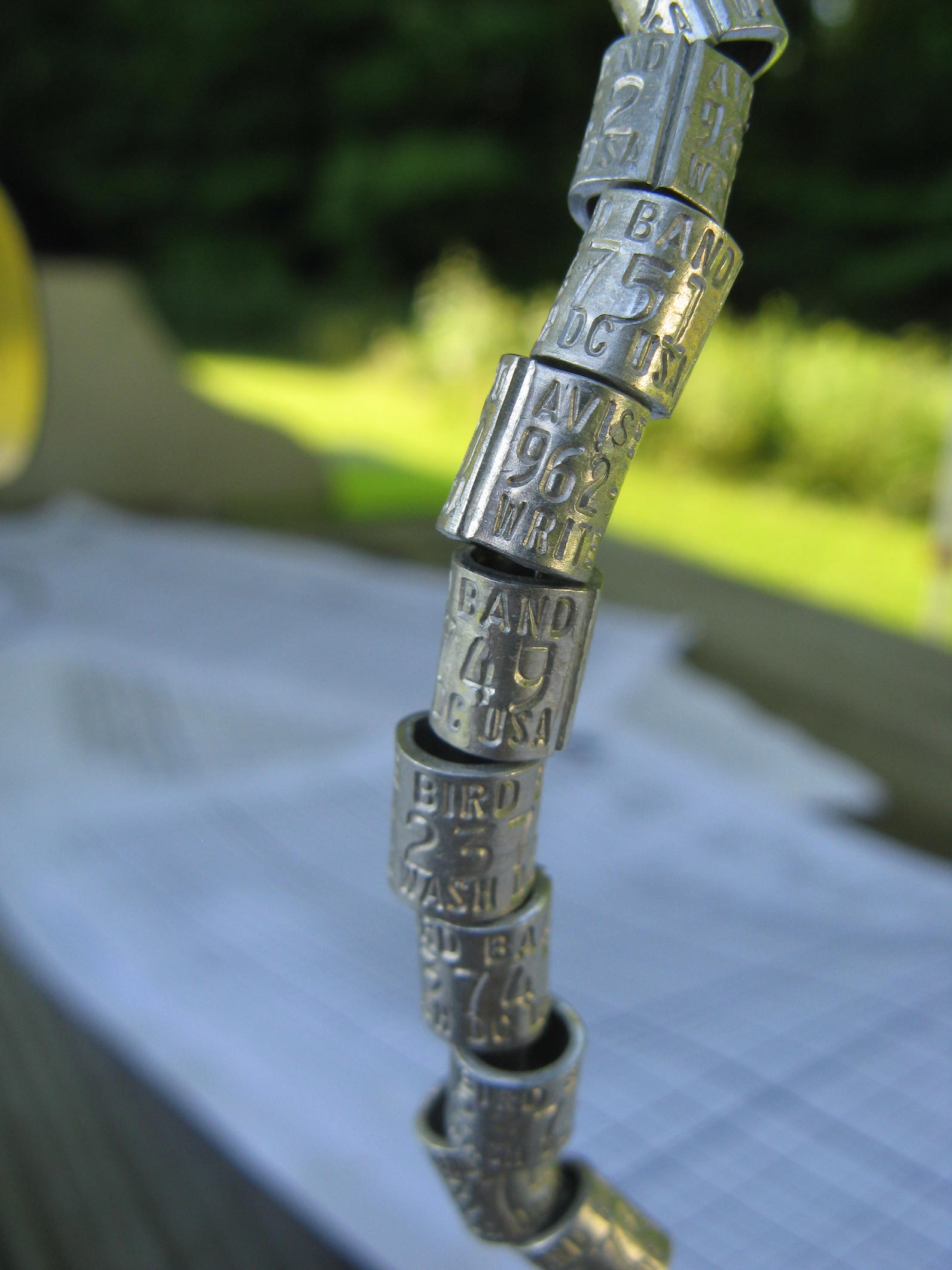
Mark LaBarr, Audubon’s Conservation Program Manager, is in charge of Audubon’s MAPS program (Monitoring Avian Productivity and Survivorship), a continent-wide program focused on banding and collecting bird population data. The program began in 1989 to understand avian population dynamics, and now there are over 1,200 MAPS stations established across the United States and Canada. Throughout the year the participating non-governmental organizations/public agencies/individuals roll out bird-catching nets across their properties. These nets are about 10 ft. tall, 30 ft. wide, and practically invisible to birds (until the sun hits them, which is partly responsible for my early start – though Mark assured me he’s been up since 4:30am). These thin, strong nets capture birds flying through and hold them, tangled yet unharmed, until we untangle them for data collection. Early this morning, Mark unfurled twelve nets throughout the Audubon property.
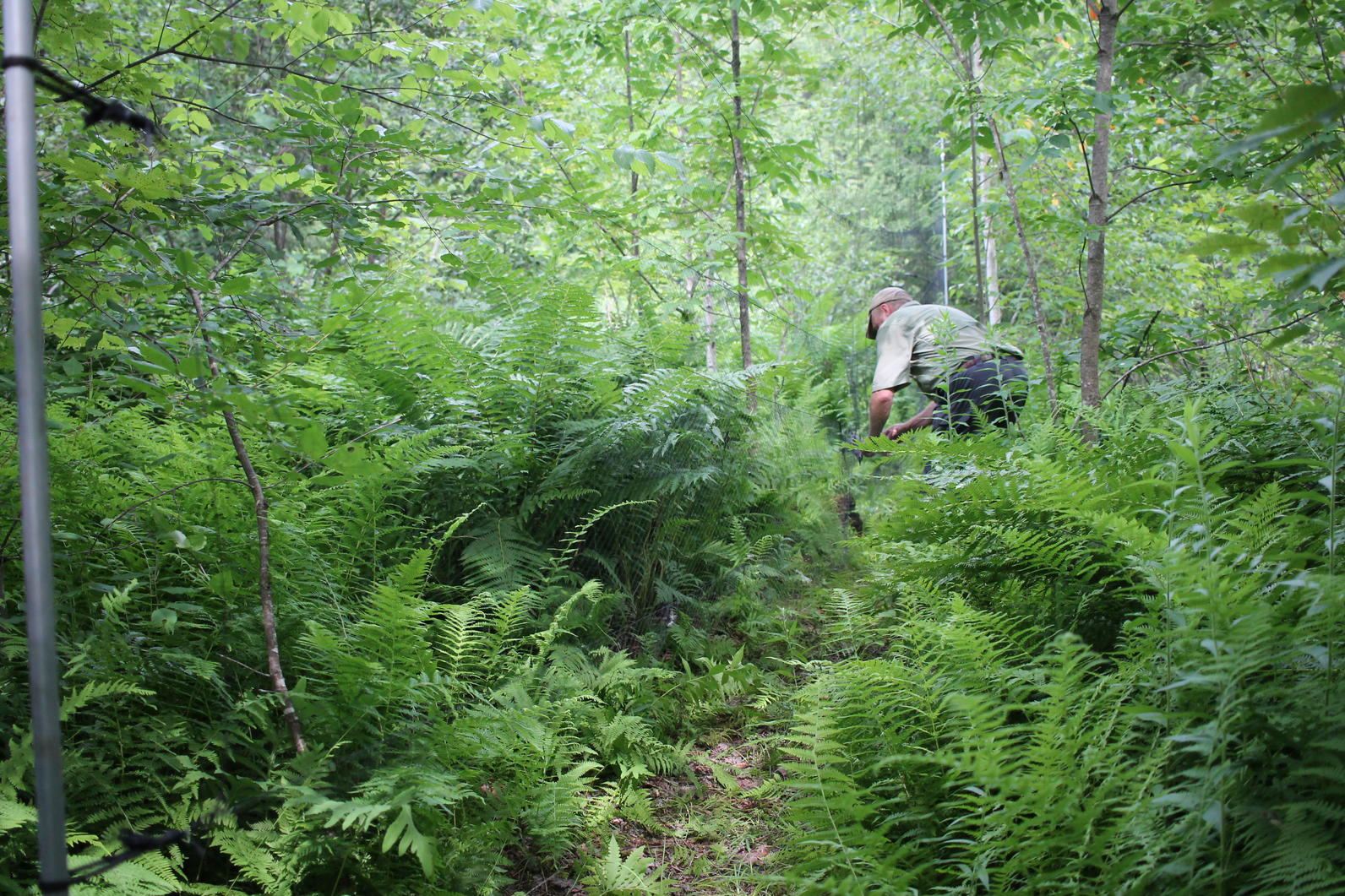
Mark gently hangs the bags containing birds on hooks and shows me the small silver identification bands we will clamp around the birds’ feet. He also shows me how to enter data – we are not just banding new birds, but also collecting data about recaptured birds (birds that already have silver ID bands). Through recapturing previously-banded birds, we learn more about these species as a whole.
He reaches into the first bag, advising me to never try to peek in first to prevent the bird from flying away, and pulls out our first bird. It has a silver band around its foot and I flip to the “recapture” datasheet. Mark holds the bird casually in his left hand as one would hold a cup of coffee – he has done this countless times and his hand gently curls in the perfect peace-sign bander’s grip around the bird’s twitching body. Though the bird is clearly not excited, this data-collection process does not hurt them.
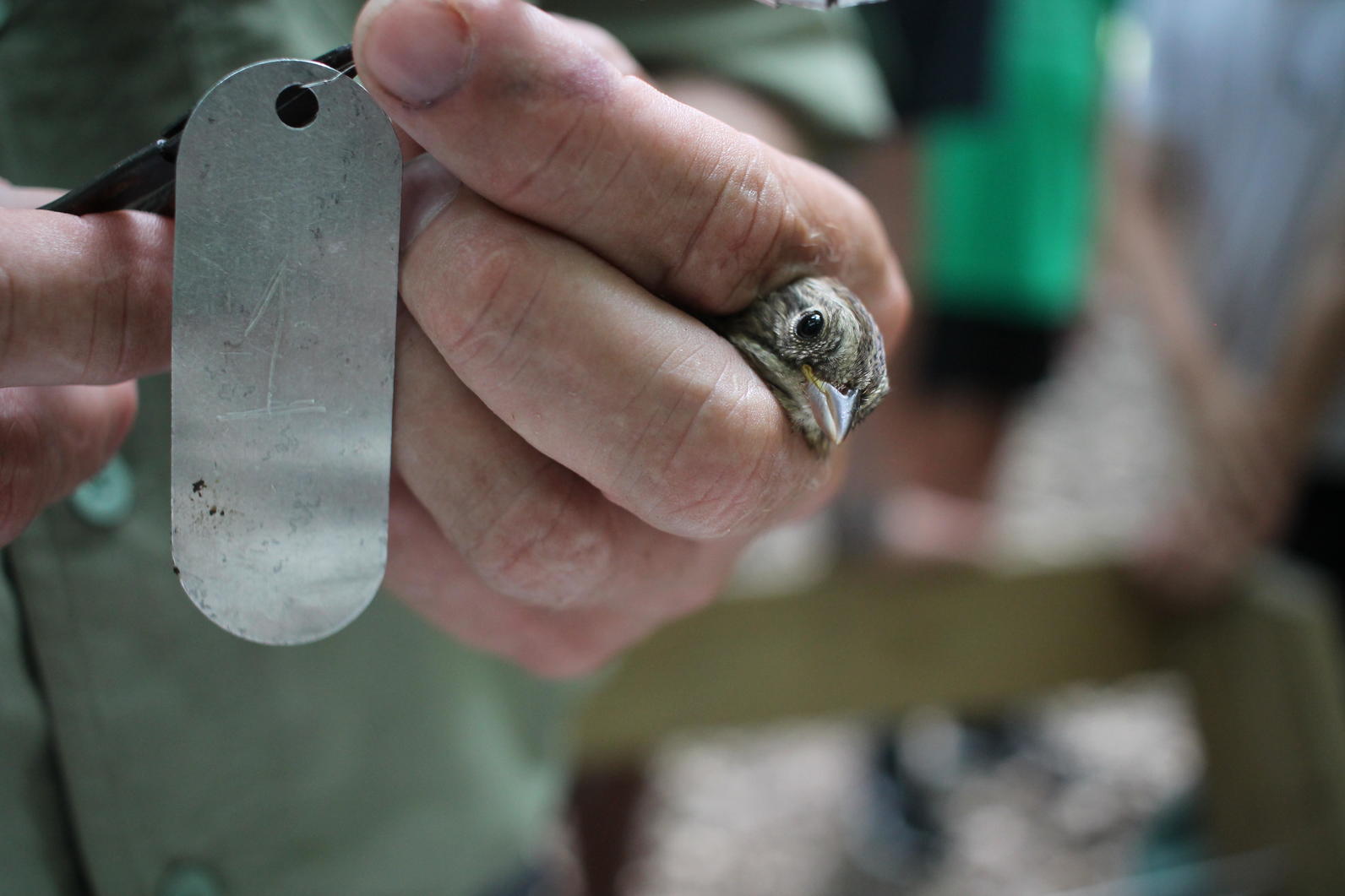
We look at evidence of wear on their wing feathers by spreading their feathers out, we blow on their stomachs to see if they have brood patches, we analyze their age and biological sex. Some of these birds, Mark tells me, migrate down to South America and on rare, exciting, occasion, he’ll get a call from a faraway place because another researcher had found a bird he has banded.
As we near the last bird bag, Mark calls out to his daughter to grab the camera – this is an exciting one. He pulls out a small bird with a bright orange breast, streaks of black its face, and a white-black stripped pattern on its wings.
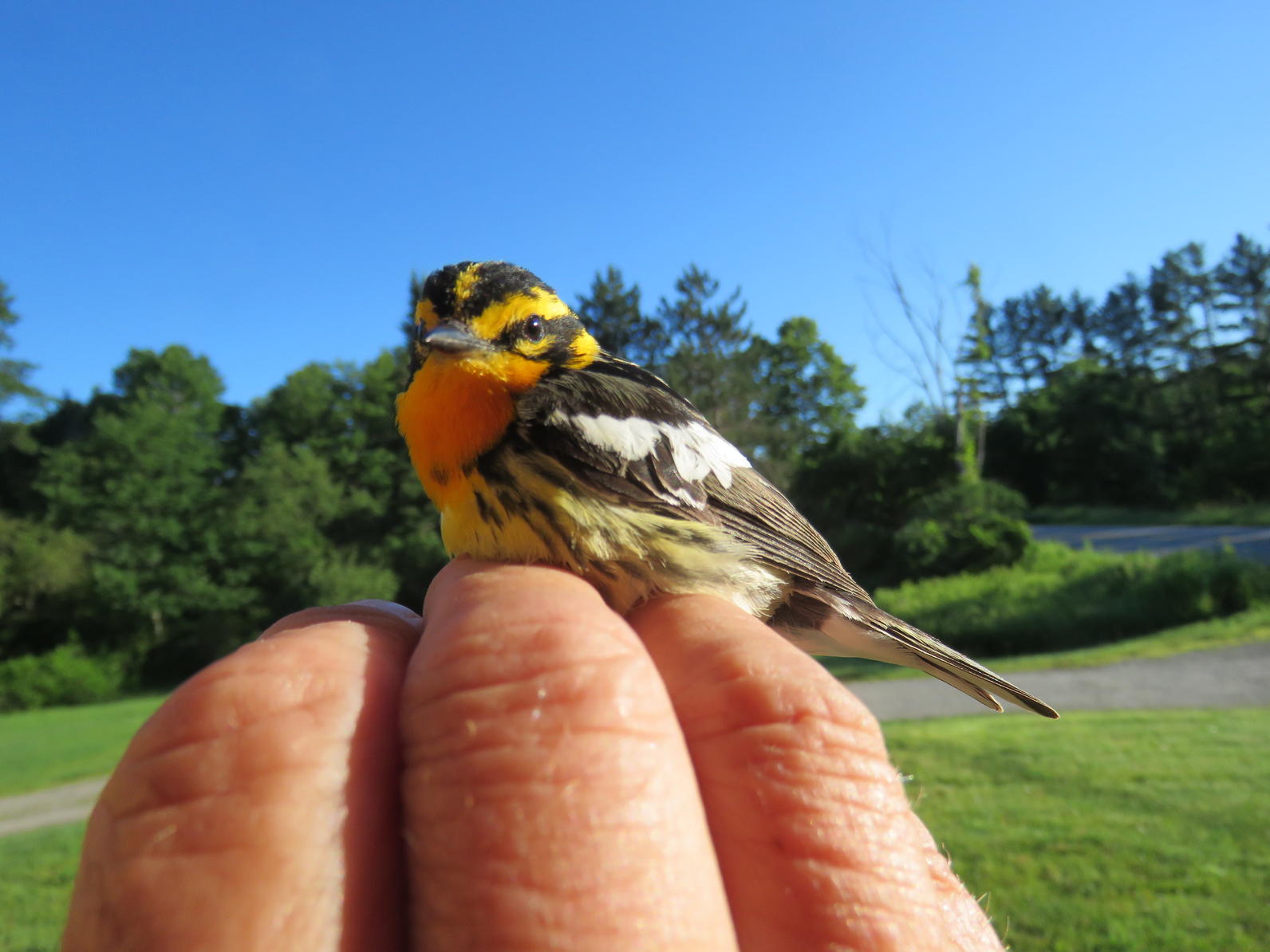
“Do you know what this one is?” he asks me. At this point, I’ve learned enough about songbirds to guess that it’s some type of warbler. He agrees. “It’s a male Blackburnian Warbler. They usually fly up too high to be caught in our nets – this is the first time we’ve caught one in Huntington.” He holds the bird in the photographer’s grip – a gentle hold by the feet so that the bird can pose for the camera, and we take some pictures.
After banding this tiny bird, we release it, collect the cotton bags, and set out to check nets again. Mark will check the twelve nets continuously though this six hour bird banding period.
Around the Audubon property, the nets are placed in different ecosystems to encompass the range of potential birds. We begin with nets in edge habitat – right where forest meets denser undergrowth. A beaver pond used to stretch much further through the property until intense rains caused a massive landslide that filled in half the pond in 2013. After this disruption the beavers moved on, allowing vegetation to return.
We make our way towards the nets by the river and see, struggling, two male Cedar Waxwings caught about a foot apart. With red-tipped wings, bright yellow flashes on their tails, and an almost painted aesthetic, the identification is easy. This species breeds relatively late – these are likely two males fighting over territory before our nets caught them.
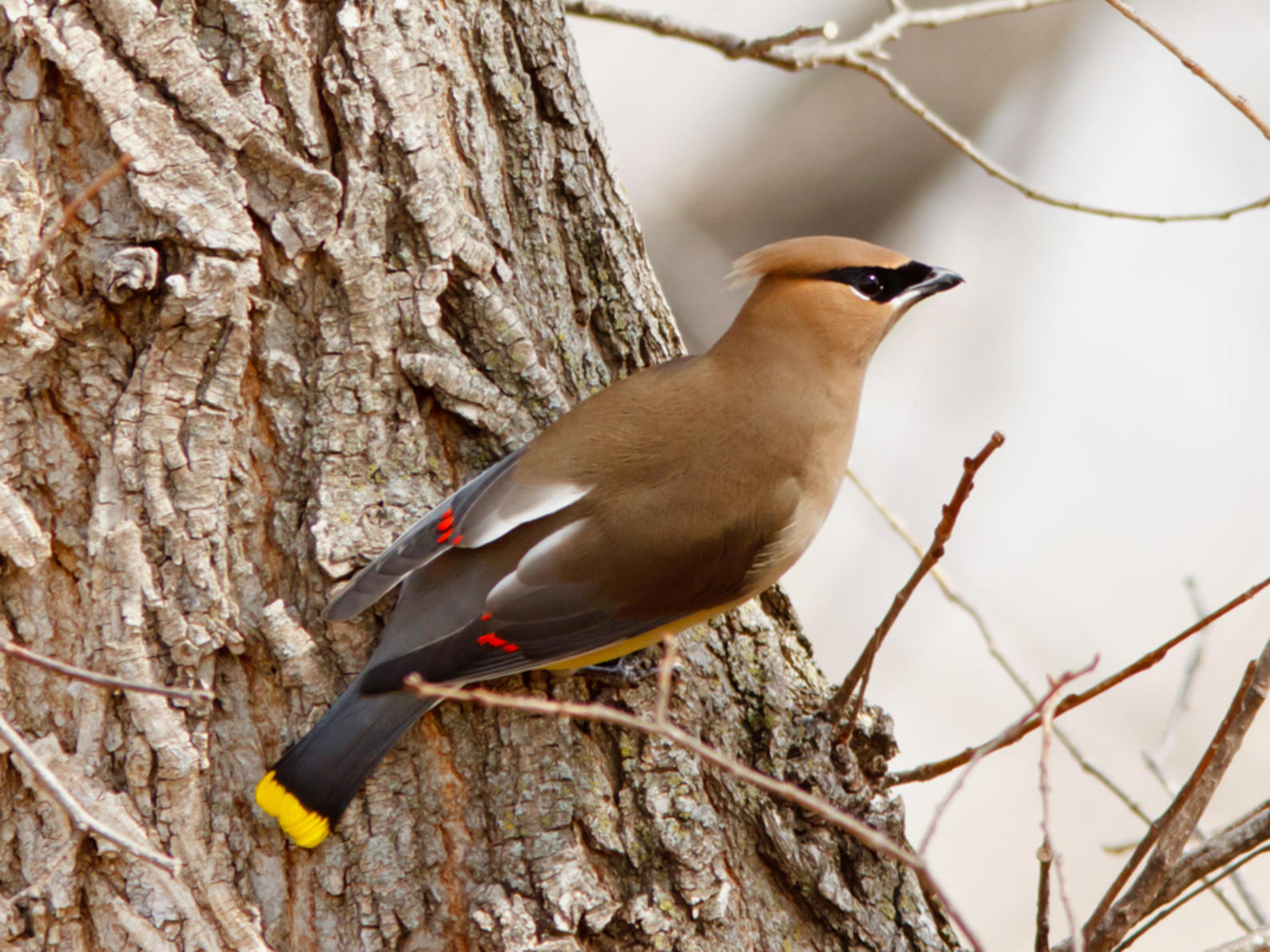
I see the Huntington River’s cut bank meandering towards the trail and wonder aloud which storm caused such severe slumping. Mark postulates that after a large rock fell out of the bank, the rest of soils followed suit. Only a couple years ago he used to string nets about five feet closer to the river – now, the bank is shrinking. Rivers shape a landscape so dramatically and in Mark’s 20 years of living and working at Audubon, he’s seen these changes firsthand.
At a net deeper in the undergrowth, we see two large blue birds tangled and cawing loudly. An adult and a fledgling Blue Jay are caught together in the net. Another Blue Jay is nearby, cawing, in a tree. Initially I assumed this was the family – yet when we identify the birds, we find no significant male or female traits on the adult bird. I learn that if a Blue Jay does not breed, it becomes a “helper bird” and assists with raising young that are not its own and does not develop distinct male or female traits. We likely had captured not the fledgling’s parent, but a “family friend”.
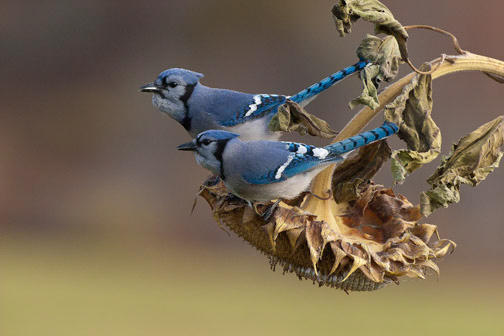
When we reach the banding station again, he chooses a bag containing a Gray Catbird – “A good bird to begin with”, he tells me, while handing me the bag. I analyze this bird. Remembering his hint about not letting the bird fly away, I sneak my hand into the bag and try to not visualize the bird hammering its beak into my skin. Luckily it doesn’t, and I manage the bander’s grip (the peace-sign hold), adequately.
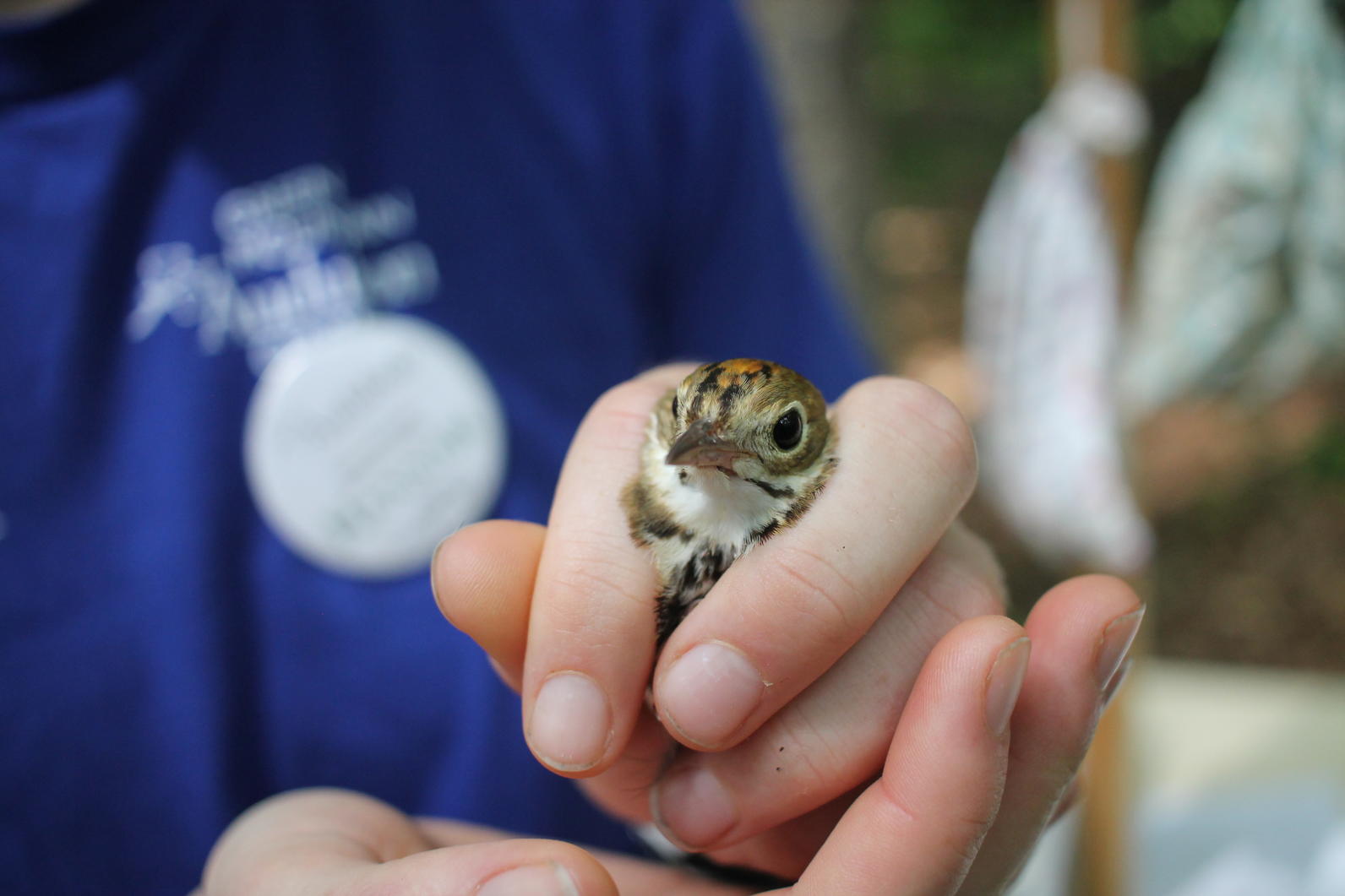
As I’d seen Mark do, I spread the wings to check the tips for wear. I blow on its stomach to check for a brood patch (bare skin where the bird incubates eggs and chicks), and check for signs of molting on the body and wings (new, smaller feathers growing in). The bird remains surprisingly still and quiet throughout the data-collection – perhaps that’s what Mark meant when he said the catbird was a good beginner bird.
After this round I check my watch - it is nearing 9 am, when my daily task shifts from conservation work to education work. Mark will keep these nets up until 11:30 am to complete the six-hour cycle. Later on, he informs me that as it gets warmer, there are less birds flying around and after I leave, he only captures a few more birds.
Mark bands seven times throughout the summer ending on August 8 to supply data for the larger national bird dataset. These data help researchers in MAPS answer questions about, for example, the birds’ relationship with our shifting climate, or how we can better manage land to support their survival. I won’t be looking at larger patterns this summer though – I will remain outside checking nets and learning the niche skill of bird banding. We’re going out again soon to run a more education-focused bird banding session for a group of middle school Audubon campers and Mark has asked me to help out. Beyond middle schoolers, he also runs pop-up public bird banding sessions sporadically throughout the summer. So, check out the link and come see what we’re up to! Until then!

